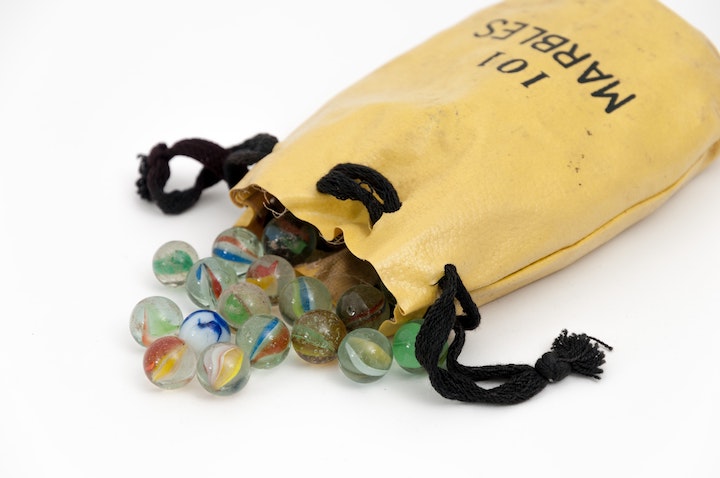By Dr. Johan Tredoux – Uncommon Community
I remember days in my growing-up years when playing marbles was our favorite obsession during break on the playground at school. Two of the marble games gave me a particular adrenaline rush. One was creating a pyramid with 10 marbles and inviting other marble players to stand back 10 feet (a foot for every marble) and to try to knock down my pyramid with one of their marbles. Every marble that missed I got to keep, but the trade-off was that a sharpshooter with one marble could hit the target and walk away with 10 of my precious marbles. The other game was to risk five marbles with an opponent to see who could throw the marble the closest to the wall on smoothed out sand. The marble landing the closest out of the 10 marbles got to keep the opponent’s five. There seemed to be a close relationship between the marbles in my pocket and the marbles in my brain. Both these games required a keen awareness and ability to navigate clearly marked visible spaces.
Today, the marbles in my brain have to navigate spaces that are not so clearly defined. Specifically, the stressful daily presence of the COVID-19 pandemic has drawn my attention to the space between so many different things in my world, as never before. I’ve become keenly aware of relationships that used to lie beyond my perception. As the SARS-CoV-2 spread throughout the world, along with it came the need for us to have an increased sensitivity to previously unnoticed worlds – the spaces between subjects—the invisible, transparent world carried through a sneeze or a cough or a touch of warm bodies. All of a sudden, I became tuned-in to those minuscule things that occupy the space between.
As a hospital chaplain, I am aware that this invisible enemy causes some to get severely ill and some to die. It makes me very apprehensive about the space between me and the patient. Now I have a heightened awareness of places I don’t go, meetings I do not attend, and outings I don’t go on. In turn, it strikes me that these things I don’t do will have a relational impact on those I do not touch, meet, or care for. The footprint of this invisible enemy is causing me to rethink the space between things – on how I could be present in absence…how I can navigate interconnections in the stark reality of enforced solitude.
Three years ago, I had to navigate a very personal and emotional space. It was the space between me and my dad’s deceased body. After six weeks in the hospital, my dad died of a “hospital virus,” a virus caused by extended intubation. My dad’s body was zipped up in a black bag, never to be opened, even for family viewing, because of the contagious nature of this invisible enemy. As I was informed of this reality, I felt the uneasy stab of the closure that eluded me. A sober reminder that viruses and body bags are a part of our natural world.
The intertwinement of our lives—human, plant, animals—has become more apparent in these days: the interconnectivity of our lives through other beings and their lives through our own. What does not go unnoticed to me are diseases that jump between species—as a result of widespread human behaviors like open markets, industrial farming, and habitat destruction. I think about our climate emergency, the possibility of mass extinction, and the fact that mass extinctions have happened before. It seems that we all have to come to terms with the possibility of our own non-existence, in order to free us up to live responsibly in partnership with other beings whose conditions are entangled in our own lifeways.
These “spaces-in-between” have caused me to rethink what it would mean not to bring harm to the patient and to do the most loving thing. I have noticed a theological shift in how love is expressed: whereas touch formerly communicated love, now separation is the more loving thing to do. These “negative spaces” loaded with invisible enemies have also caused me to re-assess what is most helpful, and least harmful.
This reassessment was put into action when I had to call the spouse of a patient who had died of COVID-19 in ICU here at Research Medical Center. I had to be “present in absence” over the phone, as I comforted her and prayed with her as she had to absorb the loss of her husband without the ability to be near him or touch his body. The invisible stories in the “spaces-in-between” have become our new reality. The invisible enemy travels in tiny aerosol translucent balls, like marbles, ready to take down the pyramid. And we had better pay attention.
Richard Rohr in Everything Belongs reminds me that “liminal space is always an experience of displacement in the hope of a new point of view.” May it be so for us as we stand at the threshold of new negative spaces.
Photo by Crissy Jarvis on Unsplash

